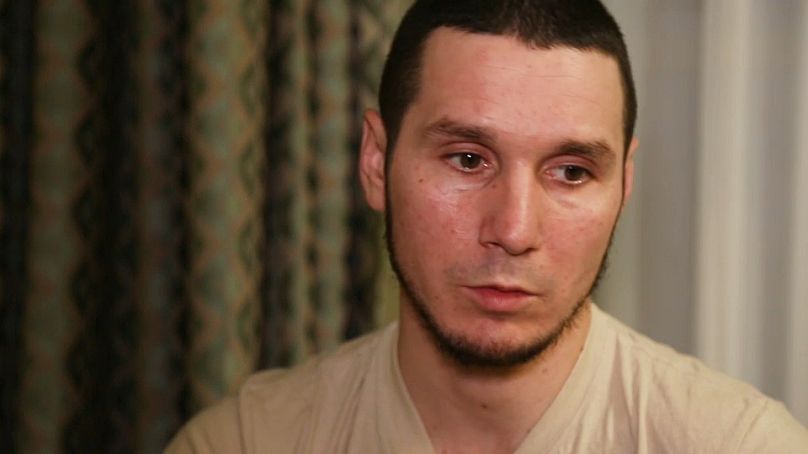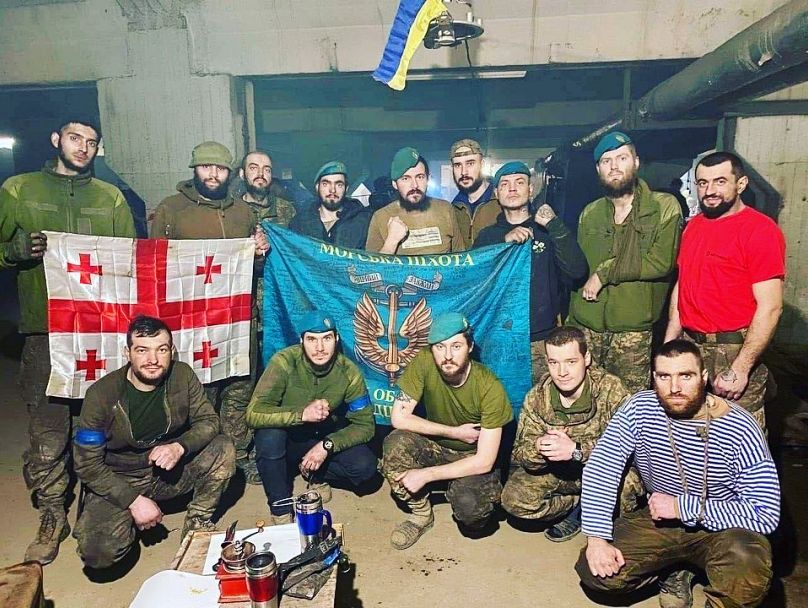It’s been one year since the siege of the Azovstal steel plant in Mariupol. Now veterans of a defining battle in the war in Ukraine tell Euronews their story - before returning to the frontline.
It’s been one year since the siege of the Azovstal steel plant in Mariupol, a bleak indication of what was to come in Ukraine.
This episode of Witness, Azovstal: The Defining Battle, is a rare account of what happened inside the steel plant’s tunnels, as well as whilst the soldiers were in Russian captivity.
A symbol of Ukrainian resistance
For almost three months, thousands of Ukrainian forces – and civilians – took shelter in the plant’s network of tunnels and bunkers.
These captives became the focus of their country’s resistance, whilst Azovstal emerged as a symbol of both Moscow’s brutality and Kyiv’s ability to withstand it.
“We understood that the longer we held Azovstal and Mariupol, the longer a large part of the Russian army would be focused on us,” Oleg Karamov told me in December. The 30-year-old master sergeant retreated into the plant as the Russians sought to capture the city.
Oleg and his comrades from the 36th Marine Brigade were stationed in Mariupol since before the war. Days into the initial invasion of Ukraine in February, they were ordered to retreat to the village of Volonterivka and later to the Ilyicha metal plant, both located in Mariupol.
“We retreated tactfully. No one fled. [...] We took our wounded, we took our dead as far as possible.”, said Oleg Karamov.
Supported by volunteers
The marines were supported by men from many other divisions such as the territorial defence or the police.
Oleg told me that half of them managed to leave before Mariupol was surrounded, whilst half of them stayed to fight.
"They did it voluntarily, no one forced them," he said.
When the Russians closed in, the only way out was through. In April, the brigade tried to escape, breaking through Russian lines to join the Azov regiment in Azovstal.
"The first line of troops went through at night”, Oleg recalled. “This was helped by the fact that the Russians didn’t have any equipment. They had no thermal cameras, no night-vision devices. The first convoy got through without any fatalities and without injuries. They were stopped at a Russian checkpoint and the Russians didn't even realise it was the Ukrainian forces. They didn't manage to see who was sitting in the cars. They shined a torch and told the group to stop. The Russian asked: ‘Who are you? Our people?’ Our fighter answered in Russian: ‘Yes, our people!’ The Russian said: ‘Ok go through!’ So the convoy moved on quietly.”
Another soldier from the 36th Marine Brigade, the junior sergeant Anton Ivlev, told me that when they reached the Azovstal plant, the destruction was colossal. “The ground was mixed with metal and concrete. There were no roads, no communications, nothing.”
“The people who were not yet wounded were engaged in combat tasks. The wounded helped with the daily chores: cooking, bringing in water - for tea and coffee, but also to clean wounds and wash the dishes.”
Rustam Babayev, a senior sailor from the same brigade as Oleg and Anton, said: “We were supposed to be reinforcements for the Azov Regiment. We got into our positions, not knowing the terrain, nor where the enemy would come from. We had no ammunition either. There were a lot of fatalities.”
One of the deadliest chapters of the war
Anton Ivlev, Oleg Karamov and Rustam Babayev survived one of the deadliest chapters of Russia’s war on Ukraine so far.
In November 2022, Ukrainian officials estimated that at least 25,000 people were killed in the fighting in Mariupol.
An unknown number of soldiers remain buried under rubble, and thousands became prisoners of war when Kyiv agreed to lay down weapons.
“When we were told there was an order to lay down arms, to surrender, we didn't believe it.”, Rustam explained. “Then we were shown this document: [...] to save the lives of personnel, we were to lay down weapons.”
On the 17th May 2022, the first Ukrainian soldiers from Azovstal were taken to facilities in pro-Russian, separatist territory, including the infamous Olenivka detention centre – where 50 prisoners of war were later killed in a mysterious explosion.
Watch Anelise Borges' report in the video player above













